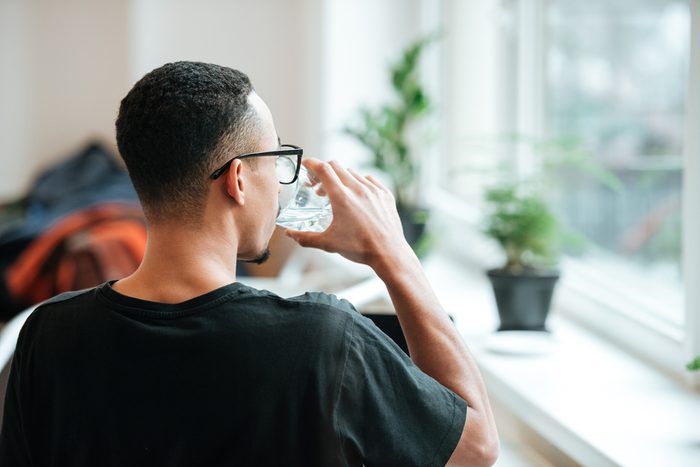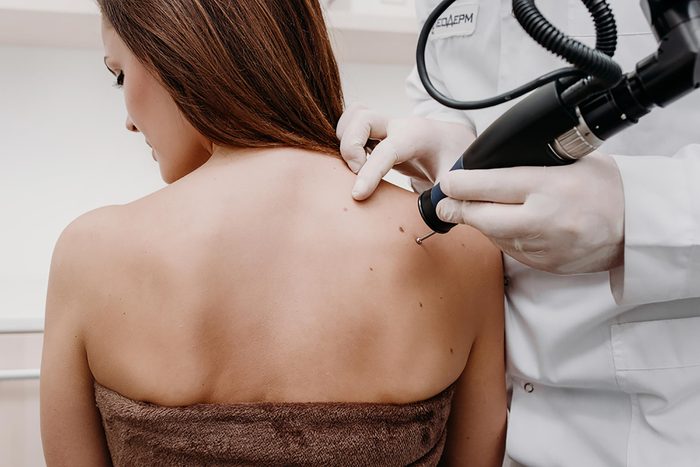Just one sunburn is enough
So you made a mistake, and now you’re lobster-red. Is one sunburn really that big of a deal? It is: “A sunburn is an injury to the skin,” says Elizabeth K. Hale, MD, senior vice president at the Skin Cancer Foundation. One blistering sunburn doubles your risk of developing melanoma later in life, according to the Melanoma Research Foundation. Here’s what else happens after just one burn, and tips to avoid damage in the first place.
There’s an inflammatory cascade
Damaged cells on the surface of your skin send an SOS to the body—your immune system kicks in, in an effort to repair DNA, says Kenneth Mark, MD, a Manhattan-based cosmetic dermatologist who specializes in the skin-cancer surgery called Mohs Technique. The immune response attracts inflammatory cells to the area, and this inflammation is what will start to quickly make skin uncomfortable or painful. (Don’t miss the 10 other weird ways the sun affects your body, besides sunburn.)

You won’t see the burn right away
Over time, skin cells pick up more melanin particles (the pigment in skin) as a protective mechanism. To you, this gradual change in pigment—from pink to red to darker red—means you won’t see the full extent of the burn until six to 24 hours after exposure, says Michele Farber, MD, a dermatologist at Schweiger Dermatology Group in New York City. Once you realize your sunburn, make sure to avoid the 10 things to not do after getting a sunburn.

Your skin tries to ease the burn
Blood vessels dilate in an effort to bring healthy oxygenated blood to the area, which will cause that tell-tale redness and warmth, says Dr. Farber. Plus, “any state of inflammation brings fluid to the skin,” she says. At the cellular level, there is swelling in between individual skin cells. This can also happen on the surface of the skin, otherwise known as a blister. And blisters are also one of the signs of sun poisoning.

Control blistering and peeling
The best defense is a strong offense—wearing SPF 30 (at least)—and reapplying every two hours. If you’re already sunburned, you can help prevent peeling by taking a non-steroidal anti-inflammatory drug (NSAID) like ibuprofen to quell inflammation and apply a skin-soothing emollient or topical aloe, says Dr. Mark. A cool (not cold) compress can also alleviate discomfort. If you do blister, resist popping them. From milk baths to teabag compresses, these home remedies for a sunburn actually work.
You may feel parched
When skin is burned, your body’s protective layer is damaged and doesn’t hold moisture in properly, says Dr. Farber. As electrolyte levels in your body shift in response to this water loss, you may become dehydrated. It’s easier to drink enough water with these hydration tips.

Your skin may be changed forever
You know how one bad sunburn can make you more prone to melanoma skin cancer? One reason may be because the burn can trigger mutations in certain genes that encourage tumors to grow and possibly turning off other tumor inhibitors. What does that mean? “You’re shutting down the body’s innate stop sign, which allows a tumor to proliferate,” says Dr. Hale.

Winter vacations are worse
People who work or spend most of their lives outdoors are more likely to get a skin cancer called squamous cell carcinoma, as opposed to melanoma, says Dr. Hale. On the contrary, people who live in temperate climates that keep covered up or stay indoors for most of the year are more susceptible to melanoma. “Exposing virgin, naive skin to the sun is more likely to cause skin cancer,” she says.
When to call your doctor
Most sunburns can be handled at home with DIY treatments like over-the-counter pain relievers, aloe vera gels, and creams. However, if you experience body-wide symptoms like fever, chills, or nausea, call your doctor, says Dr. Farber. Also, follow these 10 things you should never do after getting a sunburn.

But what if you tan?
Instead of getting a burn, you got away with a tan (phew!)—or maybe that was the plan all along. Don’t celebrate just yet; a tan is a result of “increased melanin production, which prepares the skin against future skin damage,” says Dr. Mark. But—and it’s a big one—it offers only minimal and unreliable protection. Just like a burn, tans aren’t safe, he says.




